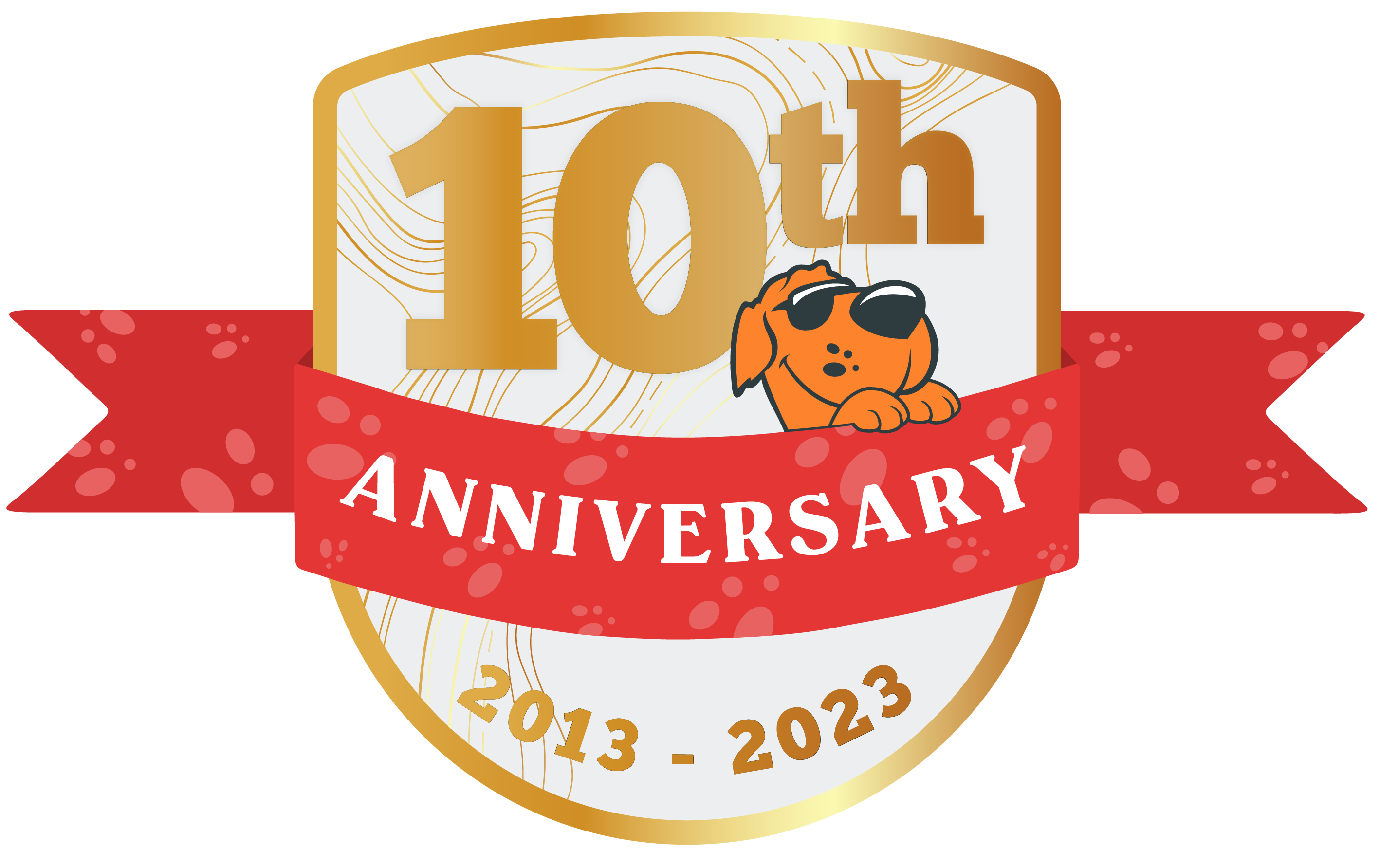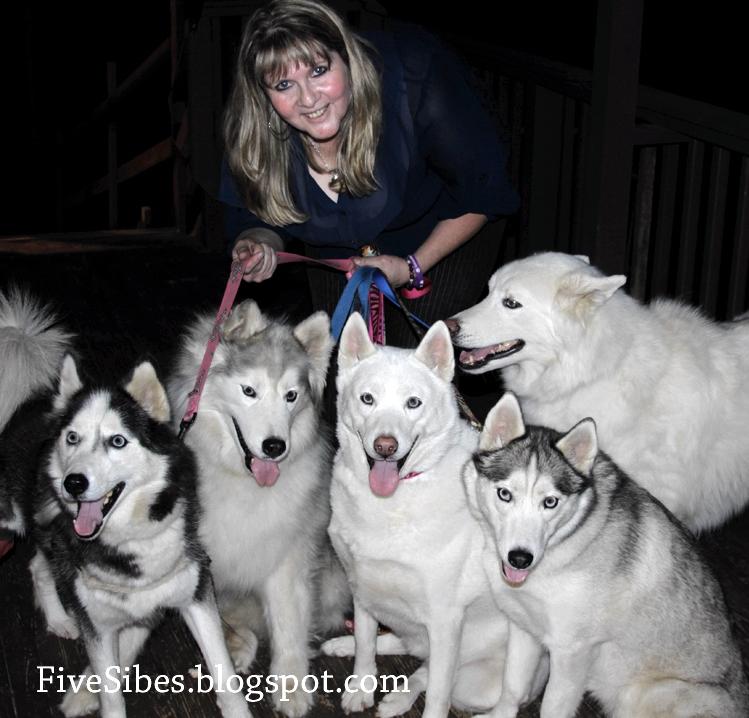Is Your Yard Dog-Ready for the Spring?
By Dorothy Wills-Raftery
Spring has sprung in the northern hemisphere, and we’ve all been anxiously waiting for the longer warmer days so we can get back to some outdoor living. But, before your dogs head out into your yard that has been under a long winter of snow and ice, be sure to do a yard check first. Here are 10 tips to ensure your yard is ready for your dog’s warm weather play.
1. Mending Fences
The snow is gone, and pups are anxious to get out and have zoomies in the new grass. Before letting your dogs out for a springtime romp, do a perimeter check to be sure there are no breaks or holes in the fencing, and that any gates to the yard are secure. Now is the time to mend all fences and secure gates. Until this is done, be sure your dog is in a good harness and on a leash as you police the yard.
Did You Know?
4Knines has a harness with a handle that serves a dual purpose. The no-pull, no-choke design with reflective straps can secure them in
the car and work as an everyday harness. 4Knines also has a six-foot heavy-duty slip
lead dog leash that comes in three colors.
And, as always, 4Knines donates to multiple animal advocacy groups, as well as groups that help veterans with service dogs.
2. Down on All Paws
A good tip is to hunker down to your dog’s level and check out all the places s/he can go to avoid injury, escape, or illness. You can discover escape holes, broken lattice under decks, new beehives, gas cans, antifreeze containers, chlorine, bug repellants, leftover winter debris in yard, etc. This is also the time of year folks set up their barbeque grills and put out citronella candles and yard torches. To keep your dog from getting burned, be sure they cannot access any of these whether walking around, or when they jump up.
3. Please, No Flower Power
While flowers, trees, and plants make for a beautiful yard, there are plenty that can be toxic to your dog (and many to cats and horses, too), and a few may surprise you. Some common yard plants that are toxic include: aloe, apple, azalea, black walnut, burning bush, chrysanthemum, daffodil, daisy, foxglove, hyacinth, iris, lavender, geraniums, orange, parsley, tulips, yews, and many more. Check the ASPCA’s Plants Toxic to Dogs List (and they also have a list of non-toxic plants for reference).
4. Just Say No to Cocoa Mulch
I wrote about this little culprit over a decade ago, and while it smells like chocolate, there is nothing sweet about it if ingested by dogs. According to the National Control Poison Center, “Cocoa bean mulch contains theobromine and caffeine, just like chocolate. These chemicals are poisonous to dogs. Dogs who swallow cocoa bean mulch could have vomiting, diarrhea, a very fast heart rate, tremors, and seizures. Death is uncommon, but has happened. It's impossible to tell how much cocoa bean mulch might be poisonous.” Bottom line: just don’t use it.
5. Don’t Bug My Dog
Spring is also the time for bugs and pest control. We know that not only can toxins be ingested by dogs, but they also absorb it in through their paws, and because they are always sniffing, they can inhale odors. Before calling in a company, or treating the yard yourself, always ask and read what ingredients are used. According to the National Pesticide Information Center, “Pet owners can minimize the chance of their pet having a problem by following label directions, selecting lower toxicity pesticides, and minimizing the amount of exposure their pet has to the pesticide during and after the application.” Many companies today use natural pet- and eco-friendly ingredients, so ask the questions and do a search online for a company that best serves your needs.
6. Keep Pools Swimmingly Safe
Be sure if you have a pool, that there are steps and/or a way out should your dog fall or climb in. If your dog goes swimming in your family pool, it’s a great idea to teach them how to exit. Here is a good training video from Bark Busters below:
Also, be sure any containers of pool chemicals are kept safely locked away, out of your dog’s reach. Looking for a safe alternative? Fill up some kiddie pools with clean cool water for them to splash in—they can easily get in and out by themselves, and no chemicals!
7. Working Up A Thirst
Periodically throughout the day, check that your dog’s water dish/bowl is clean and filled with fresh, cool water. What kind of dog dish should you use? Stainless steel is the most recommended.
Check out the Stainless Steel Dog Bowl with Non-Slip / No-Spill Design by 4Knines.
8. Keep it Au Natural
‘Tis the season for fleas and ticks. To help reduce your dog’s chances of being bugged by these nasty and disease-bearing critters, there are flea and tick repellants. Some of the chemical types can cause seizures in some dogs, but there are now some really good natural ones. Check with your vet for what would be best for your dog.
9. Help Me Get Home
In the event your dog somehow manages to escape your yard, be sure their microchip and ID tags re up-to-date. This includes having all your current info listed with both your microchip company and your vet’s office.
10. ICE is Nice!
ICE – or “In Case of Emergency” is the acronym to put before your emergency contact listed in your cell phone. If you should find yourself in an emergency situation, or you can’t make a call yourself, your contacts can be scrolled through to easily locate your emergency person. How to list it? Simple: ICE and the name, such as ICE Mom or ICE Vet.
Happy Anniversary, 4Knines!
To celebrate, they are holding a Giveaway!
Your possible prizes consist of choosing any spilt cover, a plush blanket, a bowl, or a leash!
You can enter here: https://4knines.com/pages/10-year-anniversary-giveaway
What a great way to celebrate a decade of bringing wonderful dog products to their customers!
Dorothy Wills-Raftery is an award-winning photojournalist and author. Her canine books include EPIC Dog Tales: Heartfelt Stories About Amazing Dogs Living & Loving Life With Canine Epilepsy; the FiveSibes™ Tales children’s books: What’s Wrong With Gibson? Learning About K-9 Epilepsy and Getting Healthy With Harley; and Buddy, the Christmas Husky~Based On A True Holiday Miracle (ArcticHouse Publishing). Her internationally top blogsite is FiveSibes™ , based on her five Siberian Huskies, and includes an online encyclopedia for the Siberian Husky breed.
Her work has also appeared in Chicken Soup for the Soul & Rosie the Riveter book series, Woman’s World Magazine, AmericanPet Magazine, American Dog Media, Ruff Drafts, The Sled Dogger, and Hudson Valley Paw Print Magazine. Dorothy has been awarded the prestigious Maxwell Medallion by the Dog Writers of America Association for “Excellence” for her writing, photography, and fiction. Her book EPIc Dog Tales: Heartfelt Stories About Amazing Dogs Living & Loving Life With Canine Epilepsy received the Independent Press Award for “Excellence” in the Reference Book category and the NYC Big Book Award for “Excellence” in the Animal/Pet book category. She was named “Best Author” by Hudson Valley Magazine and all four of her books were named “Best in Print” by AmericanPet Magazine.
An official International Purple Day® for (K9) Epilepsy Ambassador since 2012 and a volunteer case manager for The Wally Foundation-Canine Epilepsy, Dorothy partnered with the nonprofit Purple Day® Every Day presented by The Anita Kaufmann Foundation for her #Paws4Purple initiative, and she created the #FiveSibes #LiveGibStrong K9 Epilepsy Online Resource Library—all inspired by her epileptic Siberian Husky, Gibson, in order to help other Epi-dog families find accurate information to help their Epi-dogs.
You can follow Dorothy and her FiveSibes stories on the FiveSibes™ blog and on Facebook at FiveSibes: Siberian Husky K9 News & Reviews, and on Twitter and Instagram (@FiveSibesMom).







